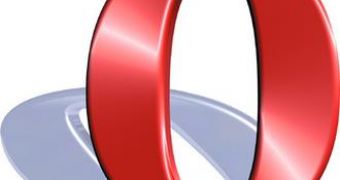Up until recently, there was no dispute concerning the used web browser. Everybody was using what came with the package. The conclusion is easy to draw as Microsoft had the largest market share in the pocket so any product released with Windows urgently gained huge percentage in the market share. And yet the Microsoft solution was not so great regarding Web surfing. IE's vulnerabilities were soon discovered and exploited by the smart hackers. The reasoning is simple: more users employing a faulty web browser gave hackers greater chances of attacking a computer and compromising it.
Unlike Internet Explorer and Netscape, Opera's code lines were written from scratch and differed greatly from the two previously mentioned. The features and functionality were easily assimilated by the users. Despite the minimal market share, Opera has gained more success especially in the latest period as the web browser has no longer a price tag on it and the adware is totally gone.
Opera project began in 1994 and involved only two people working at Telenor, the largest telecommunications company in Norway. Despite the fact that the starting point of Opera was in 1994, the third release was launched towards the end of 1997 and it could be supported by multiple operating systems. The greatest flaw of this web browser was that it came with a cost not many users were inclined to pay.
But the price tag vanished once the application got financial support from certain sponsors, starting version 5, in December 2000. Opera became free, but was compelled to display commercials of the sponsors in order to survive. This also prevented users from employing it in the daily Web surfing as adware was a visible risk users could not afford.
Version 5.01 of Opera had the following keywords: speed, size (the java enabled version was 9.5MB large), security, standards compliant and state-of-the-art. The application had almost all of it: promotion through CNET, a beta version for Linux distributions and other operating systems and a strong community that helped significantly in boosting the development towards achieving new standards. The new features included full keyboard navigation, customizable interface, and zoom function, which were not sported by competition.
In 2002, Opera reaches an all time high 10 million downloads. Up until then, its functionality was going towards mobility (instant messenger in version 5, various contracts signed with Ericsson, Symbian Ltd and Sharp) and now it was time to make the next step, introducing the SMS panel allowing users to send short text messages to mobile phones directly from the browser.
Revamping Opera meant the release of the 7th edition. "Less is more" was the new motto of the application and the code lines have been reworked from the rendering engine and up (kinda like what Microsoft has done with IE7). Opera 7.0 had a small download size and included a new interface, skinning, news client (in 2002), standards support was improved and small-screen-rendering was introduced. The latter feature allowed the browser to be incorporated into PDAs and mobile phones.
One thing was missing, or better said, was way too much for the users: it contained adware and the adware-free version had a whopping price of $39 (6 months of OperaMail Premium for free). All these would change when the company would be able to sustain itself without the needs of sponsors, mainly as of version 8.5. The reason posted on the website was "Opera's growth, due to tremendous worldwide customer support, has made today's milestone an achievable goal."
In 2005, the revenue stream from Opera sells was about $3.9 million. Giving it away for free meant a revenue give-away. Some speculated the catch that had to be in there somewhere. Om Malik from GigaOm did a little digging and managed to pull out some information about the sudden change of plans in Opera's policy. He "hounded" the Opera PR and learned that the deal of the moment was with Google and meant a "referral-for-dollars agreement similar with the likes of eBay and Amazon."
The new ways of the Internet and the new technologies used in file sharing made Opera introduce version 9.0. It included BitTorrent download support, widgets, content blocker, thumbnail web page view when hovering the mouse over the tabs.
The latest version of the software comes with a small package of features including only two tools. Speed Dial, borrowed from the mobile experience, and Developer Tools (a set of tools that have been used internally by the developers at Opera Software).
The metamorphose was slow at the beginning and increased rapidly towards higher versions. Starting with a minimum of market share, Opera succeeds to attract users through its nifty interface, original personality. Now we can say that it proves to be a reliable web browsing application equipped with the functionality and ease of use every Web surfer needs.
For alternatives to Opera you can try here or here. Or, you can read the results of some tests run on all three of them here.

 14 DAY TRIAL //
14 DAY TRIAL // 
